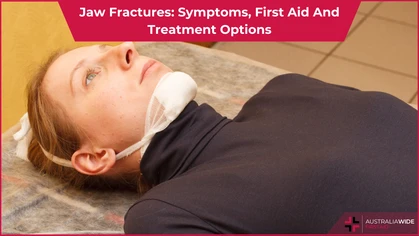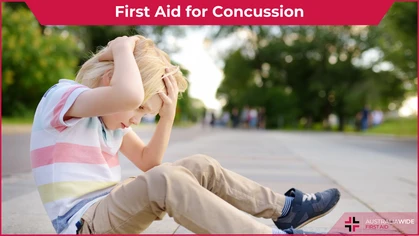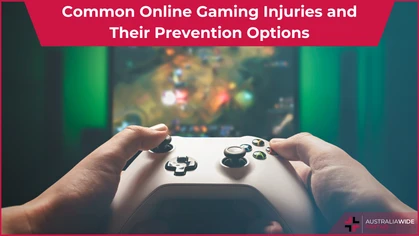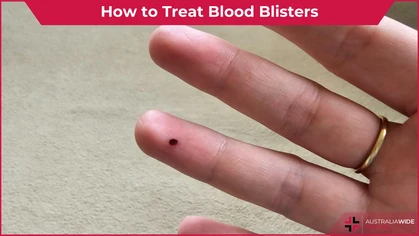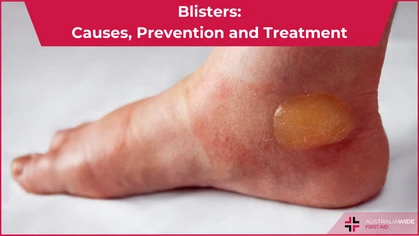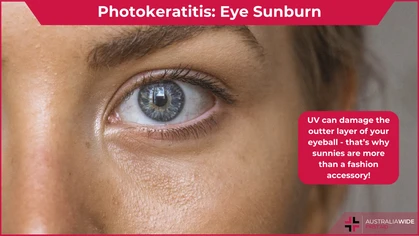Frostbite - How to Recognise the Symptoms and When to Seek Help

Injury
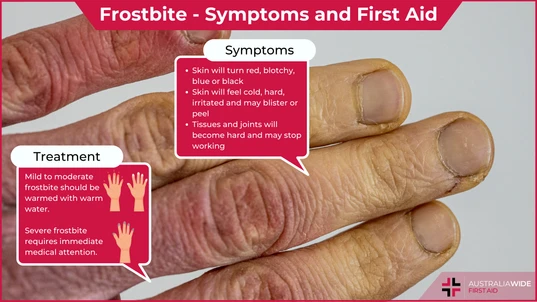
Colour change is a clear sign of frostbite.
Frostbite describes the condition where the skin, and tissues underneath the skin, freeze. It can occur during prolonged exposure to temperatures at or below 0 degrees Celsius. Most Australians believe that frostbite is uncommon here. It is important to recognise the signs and symptoms, as it can occur within minutes in extreme cold. Knowing how to treat frostbite and when to seek medical attention can mean the difference between keeping limbs and amputation.Risk Factors
There are a range of circumstances that can increase your risk of frostbite. These include:- Living in high-altitude areas or areas that experience long periods of extreme cold.
- Hikers, mountaineers, and people participating in sports at altitude or in the snow.
- Not wearing appropriate clothing while engaging in snow or cold-weather activities.
- Being homeless.
- Having conditions such as diabetes, some autoimmune conditions, or poor circulation.
- Military personnel on field assignments.
- Working outdoors.
- Being a baby or young child, or over the age of 75.
- Being wet in cold weather.
- High wind chill.
- Altered mental state.
- Malnutrition.
- Alcohol or drug abuse, including cigarettes.
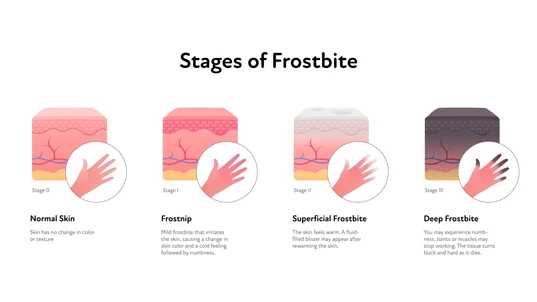
Frostbite follows a distinct progression, it can develop slowly or very quickly.
Signs and Symptoms of Frostbite
The most affected areas are the extremities, including the fingers, toes, chin, cheeks, and nose. The initial stages of frostbite can go unnoticed, often without pain. As the condition progresses, you can experience:- Mottled or white skin
- Waxy or hard skin
- Pain, itchiness, pins and needles, or numbness
- Blisters or swelling
First Aid for Mild Frostbite
It is important to note that frostbite should be seen to by a medical professional. In mild cases, it is possible to treat yourself. However, medical advice should still be sought for assessment. If it is a mild case of frostbite, treatment can include putting the affected area into warm water for 15-30 minutes. The water should be no more that 42 degrees Celsius, and should feel only slightly warm to the touch. The person with frostbite will feel pain as the area warms. Taking painkillers can help relieve the discomfort. Avoid using direct heat sources such as hot water or heat packs, and do not massage the area. These treatments can inadvertently cause more damage to the area. If a mild frostbite site develops blisters during treatment, seek medical attention. Ensure that the person is kept warm throughout the rest of their body while receiving treatment. Remove any wet clothing, and stay out of wind if possible.Moderate to Severe Frostbite
Frostbite cases that are moderate to severe require medical attention. Treatment should not be done at home. It is important to seek help from a medical professional as soon as possible. Treatment in these cases can include slow warming of the site, sterile dressings, limb elevation, and splints or braces. Doctors will prescribe appropriate pain killers during and after treatment. If you are admitted to hospital, you will likely be treated in a burns unit. The injuries caused by frostbite are like burns, and recover can be a long process. In extreme cases, tissues and skin may have died. Treatment may include the removal of any tissue that has been damaged, infected, or died. This can include surgery and amputation of the affected site. Antibiotics are often prescribed to reduce the risk of infection.Conclusion
In Australia, the risk of frostbite is usually low. However, it is important to be aware of the factors that could make you more vulnerable. These include:- Your physical condition
- Clothing
- Weather conditions
- Exposure time
Other Resources
Check out the video below for more information on how to provide first aid for Frostbite: You can download a free printable copy of our First Aid for Frostbite Chart. And for our full suite of downloadable resources, head to our First Aid Chart library.
Originally published at
https://www.australiawidefirstaid.com.au/resources/frostbite
as part of the Australia Wide First Aid Articles Library


